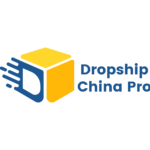So you want to start a dropshipping business. Maybe you already have the suppliers, warehousing, and shipping figured out. That leaves you with one simple, yet crucial element of the whole puzzle: pricing your products.
When we say pricing is simple, it’s because the whole process is mainly based on weighing out your expenses to estimate a price that will still net you the profit margins you’re looking for. However, contrary to popular misconception, simple doesn’t mean easy. Careful calculations and risk assessments are inseparable parts of any drop shipping pricing strategy – if you’re new to this business, you’re likely to struggle at first.
Thankfully, we’re here to help you out. In this article, we’ll dive into the nitty gritty details of dropshipping pricing. Once you’re done reading, you’ll know how to devise your strategy like a dropshipping pro!
Key Takeaways
- A dropshipping pricing strategy can make or break your business
- Your product and business costs aren’t the only things to take into consideration when pricing your items
- Perceived value pricing is a powerful way to elevate profit margins for high-ticket products
- When setting prices, be sure to always consider them from a customer perspective
Why Is Having a Dropshipping Pricing Strategy Important?
It may be tempting to base your whole pricing strategy around the price you paid for the product and adding $5 or $10 on top of it. It’s simple, makes sense, and is guaranteed to net you a fair bit of profit, right? Well, not exactly.
There are plenty of other factors to take into account when setting the prices at your online store. You need to look at your expenses holistically: how much you pay for storing, shipping, and sourcing your products all comes together to form the final picture of your expenses. Then, there’s your target customer base: how much are they willing to pay for the products you’re offering, and what could potentially push them to pay even more?
These are just a few of the questions you should ask yourself when you start planning your dropshipping pricing strategy. In the next section, we’ll show you how to use this information to create a pricing plan that covers all the bases.
| Dropship China Pro’s Dropshipping Guide for 2024 Keep in mind that pricing is just one aspect of dropshipping you’ll need to master if you want to build a long-lasting, profitable business. Our comprehensive guide will equip you with the knowledge you need to do just that. MASTER THE ART OF DROPSHIPPING |
How to Price Your Products: Dropshipping Pricing Strategy Basics
As we already mentioned, your profit margin is merely one of the many aspects that play a role in determining your product prices. If you want to develop a foolproof pricing strategy that will stand the test of time and be easily adjustable to new market developments or expanding customer base, you’ll need to create it based on a number of critical factors.
Below, we examine the eight things you should take a look at to aid you in developing your pricing strategy.
Perceived Value
This is the cornerstone of any pricing strategy. Perceived value hinges on understanding how your product is perceived by customers. Factors such as quality, brand reputation, and unique features influence this perception. Your product’s perceived value allows you to set a price that aligns with what customers are willing to pay, optimizing your revenue.
Price Elasticity
It gauges how sensitive consumer demand is to price changes. If demand is highly elastic, even a slight price increase can lead to a significant drop in sales. Conversely, inelastic demand means customers remain relatively unaffected by price changes, i.e. are willing to buy a certain product, even after a significant price hike. Balancing price elasticity is crucial for maximizing your dropshipping profits while avoiding overpricing or underselling your product.
Target Audience
Understanding your target audience is absolutely essential for pricing. Different customer segments may have varying price sensitivities, preferences, and interests. Analyze your target consumers demographic data, preferences, and purchasing power to tailor your pricing strategy to resonate with each group.
Marketing Expenses
Marketing expenses directly impact your pricing strategy. If you spend a lot of money on marketing, you might have to raise prices in order to stay profitable. Carefully assess your marketing budget and its effectiveness in reaching your target audience, in order to ensure that it aligns with your pricing goals.
Taxes
Taxes are another external factor that can significantly affect your product’s final price. Consider sales taxes, import/export duties, and other applicable levies when setting prices. Properly accounting for taxes will help you remain compliant and avoid unexpected financial burdens. Consider enlisting the services of a good accountant, so that you
Price Psychology
Price psychology explores how consumers perceive prices. Strategies like charm pricing ($9.99 instead of $10) or bundling can influence buying decisions. Understanding these psychological triggers can help you set prices that entice customers while maximizing revenue.
Product Costs
Product costs usually encompass manufacturing, materials, labor, and overhead expenses. Of course, in the case of dropshipping, you don’t actually bear most of the costs outlined above. You still pay for the final product, though, which is a major expense. Regularly review the companies you source products from and opt for the best quality-to-price ratio to manage these costs effectively.
Business Costs
Apart from product-related costs, consider the broader business expenses. Overheads like rent, utilities, salaries, and administrative costs directly impact your pricing strategy. For dropshippers, many of these costs are a non-issue, especially if you use a dedicated dropshipping center that handles the logistics. Still, the price you pay for their services should be factored into your final estimate. Ensure that your product prices not only cover these costs but also contribute to your business’s growth and sustainability.
Pricing Strategies For Different Types of Products
While all of the factors we outlined above are universal across all product types, your final strategy will also depend on the type and quality of the products you’re selling. Typically, we can distinguish between three categories of products: low-, medium-, and high-ticket.
Low-Ticket (<$10 Product Cost)
Getting the pricing right for low-ticket items can be quite tricky. This is because these products are generally low-quality. Price them too high, and people will scoff at your online store and likely never return to it again. Pricing these products too low, on the other hand, can result in high sales numbers, but very low profits due to the fact that you’re selling too close to the price you’ve purchased for.
So, how much should you upcharge a product like that? Here are three approaches to selling low-ticket products that you might want to try out for your business:
- Free + Shipping: This is a cool trick you can implement to make your low-ticket products a whole lot more enticing for your customers. Let’s say you’re selling plastic toy dinosaurs that you’ve acquired at $2 per item, and can ship them out to the customer for another $1. In this scenario, your expenses amount to $3. On your website, you can market the product as free, with the only thing that your customers have to cover being shipping. Set the shipping costs to $9, and you’ve got yourself a 300% markup! These kinds of strategies work best as limited-time offers.
- Fixed % markup: Low-ticket products are often bought on impulse, and the purchase is primarily motivated by the item’s low price. Let’s say you’re selling goods that have cost you $5 per item. You can fix your markup at as much as 400%, making the price $20. Turn it into $19.99 to have the price start with a “1,” making it even more attractive to impulse buyers!
- Fixed dollar markup: This strategy is similar to the one above, except that you’re working with dollar amounts here, instead of percentages. We’ve kind of slandered it at the beginning of this article, but the truth is that it can actually work pretty well for low-ticket items. As a general rule of thumb, you should strive to make at least $5 off of each item you sell. Of course, if you sell at a really high volume, you can drop your markup by a dollar or two – you’ll still turn a healthy profit on top of making your product more appealing to new buyers.
Medium-Ticket ($10-$25 Product Cost)
The success of your medium-ticket items will depend on how well you gauge your audience’s demand for the particular product, as well as its perceived value and total expenses on your end.
Let’s say, for example, that you’re selling video game-related merchandise. Your audience is likely to consist of people who are very into particular series or franchises, and might be willing to pay a premium price for a t-shirt or mug with a reference to their favorite games. On the other hand, hobbyists are well-aware of the prices of your competitors, so if you set yours too high, you might run the risk of losing out on valuable customers.
When it comes to medium-ticket items, we’d recommend going with one of the two following strategies:
- Bundle pricing: If you’re selling a number of different products, you can try bundling items to maximize your profits. In a nutshell, you’re going to want to set a high markup on the “main” product in the bundle, and motivate your customers to buy it by throwing in an additional, heavily discounted product. For example, you can price a t-shirt you bought for $10 at $50, and add an option to bundle it with a hat that’s 40% off. That way, you’ll sell the t-shirt at a much higher price than you normally would, and generate a higher profit margin than if you were to sell both products individually.
- Cost-based pricing: As opposed to low-ticket items, buying medium-ticket items will eat up a hefty portion of your budget. This is why summing up all of your costs and deciding on a price that’s a certain percentage higher than your total cost is a decent strategy for this product category. Aim for a profit margin of at least 20% to maintain a profitable business that you can continue to expand.
High-Ticket (>$30 Product Cost)
Items that cost more than $30 when you buy them from suppliers are considered “high-ticket.” There is no price ceiling in this category – certain high-ticket products, such as electronics, may cost you hundreds of dollars and more. So, how exactly do you go about pricing-up in a way that’s realistic and profitable?
The answer is perceived value pricing. When incorporating this strategy, you’ll need to focus heavily on the marketing side of your business. You’re going to want to try to create an image of a brand that’s reputable, popular among customers in your target market, and one that prides itself on selling high quality products meant to last for the years to come. Here are some ways to increase your products’ perceived value:
- Create a visually appealing, interactive website
- Place your brand logo on the products
- Invest in user-generated content (UGC) to build up a social media presence
- Place studio-quality, self-made videos and images on your website
People will also be more likely to spend hundreds or thousands of dollars on your products if they know that you’ll provide them with excellent customer service and after-sales support. Stay in touch with them after they make a purchase, and be available to answer any and all questions they may have.
Finally, implement a no-frills replacement policy should your valued customers receive a broken item. There’s a very low chance that it’ll actually get damaged during shipping, but providing this guarantee to potential customers can go a long way in having them spend more at your online store.
The Bottom Line
Ultimately, creating your dropshipping pricing strategy isn’t all that different from what other businesses do. The main difference? With dropshipping, you save a ton of money on manufacturing and staffing costs, allowing you to set an even higher markup on your products.
Dropship China Pro was created to help aspiring business owners just like you develop their brand by taking care of the logistics side of things for them. Over 5,000 successful businesses rely on our services, and we pride ourselves on being one of the best platforms for dropshipping you can find nowadays. From product sourcing to order fulfillment, you can leave the back office work to us, allowing you to focus on perfecting your store and marketing strategy.
LET’S WORK TOGETHER TO GROW YOUR BUSINESS
Dropshipping FAQs
You might not make it happen in the first year of your business’s activity, but making $10,000 per month from dropshipping is certainly possible. In fact, you can even aim much higher than that! Partnering up with an experienced dropship fulfillment company will help you achieve your financial goals much faster.
Our recommendation for beginner dropshippers is to start with around 50-60 products spread across 4 main categories. Following this rough guideline will help your business’s image as a legitimate establishment that potential customers can trust.
At the beginning of your dropshipping journey, you should aim to establish a steady profit margin of at least 15%. Anything between 15 and 20% is considered a decent margin that will allow you to keep your business afloat and pocket a decent amount of money for yourself. With enough experience, a trustworthy logistics partner, and a good product line-up, going beyond 20% is definitely achievable, too!

I’m Sackod, the business development lead at DSCP. I focus on helping experienced dropshippers solve real fulfillment problems — from U.S. warehouse operations to supply chain optimization — with a hands-on, transparent approach.






